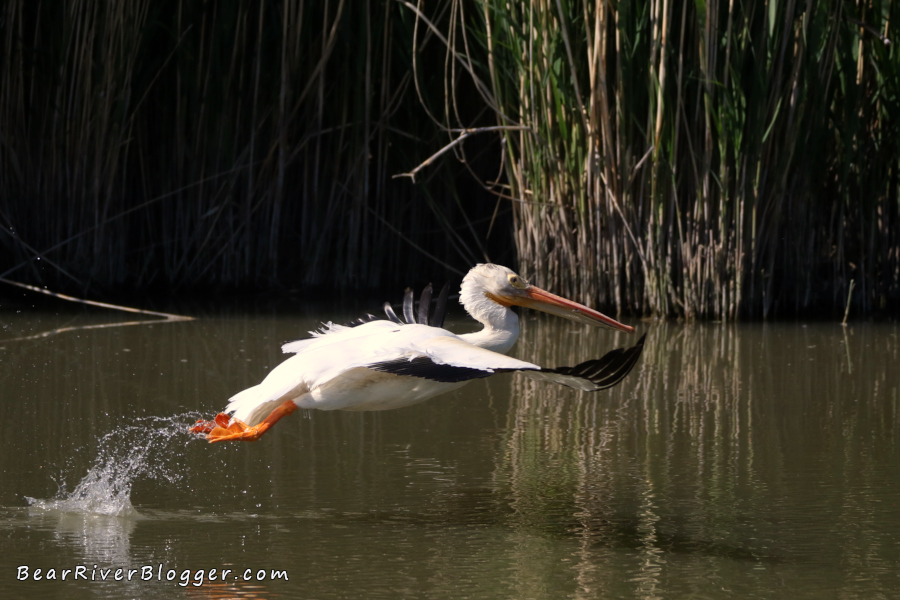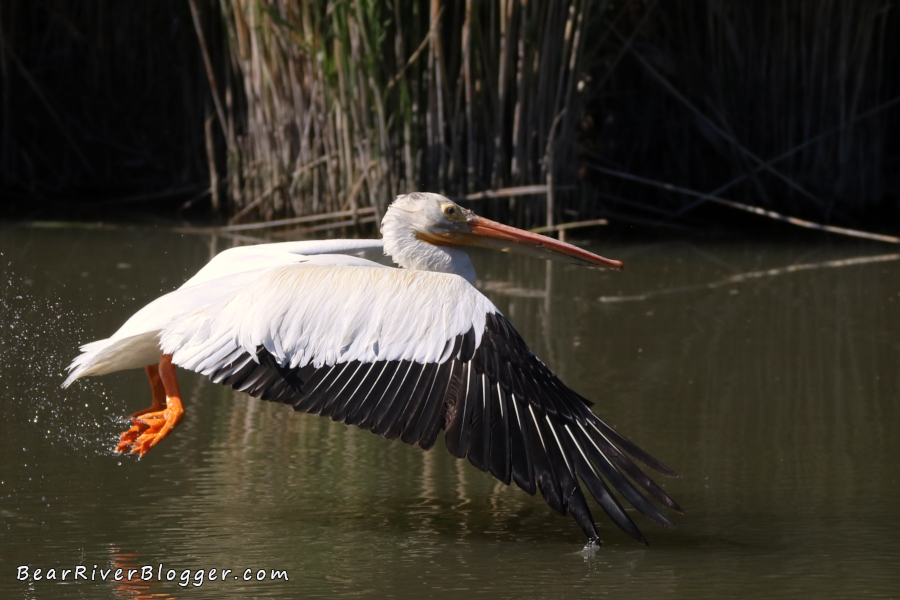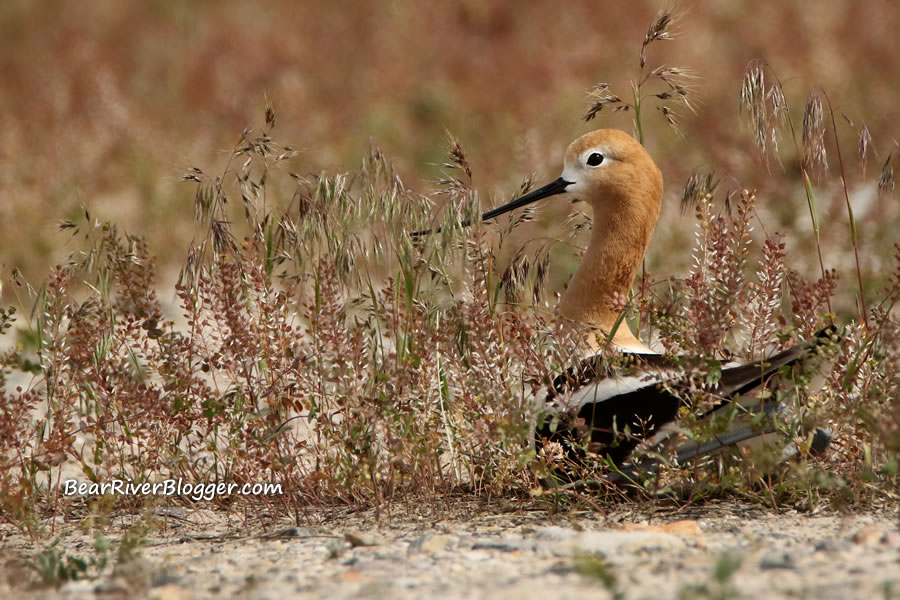Despite not feeling 100% yet after fighting the flu all week I somehow talked myself into grabbing a camera and headed for the Bear River Migratory Bird Refuge auto loop this afternoon, a time of day I rarely visit the refuge solely for bird photography purposes mind you.
Unfortunately, it wasn’t until early afternoon when I felt good enough to go and I knew by then the harsh afternoon sunlight, not to mention the mosquitoes and horseflies, would be there waiting for me but, even so, I still had to put myself behind a camera and my lens in front of a couple of birds before I drive myself out of my mind from being cooped up all week.
The drive around the bird refuge auto loop wasn’t too eventful, at least from a bird photography standpoint that is, except for a few decent American white pelican images but due to the harsh midday light they aren’t anything to write home about, at least I don’t think so that is.
All of the images for this post, except one posted below that will be noted as such for comparison, were photographed today during the early afternoon hours, a time when the sunlight is quite bright and the colors very flat when it comes to photography.
Typically, the best time to photograph outdoors, birds or anything else for that matter, is during what photographers refer to as the “golden hour”, the first couple of hours just after sunrise and the last couple of hours before the sun sets for the night.
These are the times of day, both early morning and late evening, when the natural light from the sun is at a very low angle and, as such, is the softest and the warmest, giving even the most mundane scene a bath in extraordinary colors that can make even an ordinary subject, well, quite extraordinary to say the least.
There are exceptions to this rule, however, as days with some thin or moderate cloud cover can actually make for a good afternoon photography excursion as well.
In fact, if I had to choose between photographing late in the day with full sun, no clouds in sight, or a day with clouds, even thick, heavy ones, I would take the cloudy afternoon over the full sun afternoon without any hesitation.
The reason for this is simple, a layer of cloud cover does help filter out the harsh afternoon light.
The trade-off is clouds leave you with less light to run the camera at faster shutter speeds, however, so adjustments have to be made to compensate for the lack of light but usually you don’t get harsh light with clouds, just less of it overall to run the camera properly.
There is one small saving grace to all of this if photographing during the harsh afternoon sunlight is your only option, many of today’s photo editing programs can help a flat image stand out a bit more, well, to a certain degree that is.
You just don’t want to overdo editing the image as there becomes a point where it will no longer look natural and why taking the best image in the best light is always the best option.
All of today’s pelican images were edited a lot more than I usually like to due to the harsh, flat light I was faced with but I’ll show you in a minute why I did so much editing with an unedited version of one of the images for comparison.
Take a look at this image, a nicely composed image of an American white pelican taking off from the water, a scene I love to photograph whenever and wherever I get the opportunity.

Overall it doesn’t look too bad as it stands alone but later on, we’ll compare it to a similar image photographed during the morning “golden hour” timeframe to give it some contrast.
After playing with the image’s temperature and color level settings this is about as good as I could do for this image, not a bad job considering what I had to start with.
Here’s the original, uncropped, and completely unedited photograph, a stark comparison isn’t it?
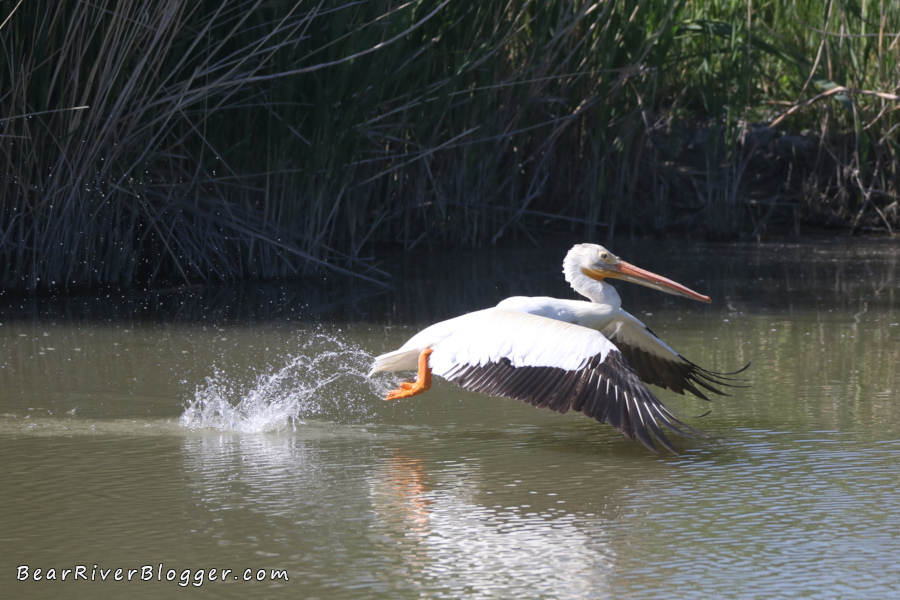
You can see how washed out the image originally was from the harsh, midday sunlight and how modern photo editing programs can help “save” a poor photo.
I could have worked the image a bit more but, honestly, any more editing and it would start to look “overworked” so I stopped and let it stand as is.
The edited version is definitely better than the original but still not an image I am pleased with solely because of the harsh light, something that can only be overcome by photographing in warmer, softer light, i.e. mornings and evenings.
Now for full comparison here is an American white pelican image I photographed on the Bear River Migratory Bird Refuge auto tour route a few weeks ago but during the early morning hours on a day with full sun.
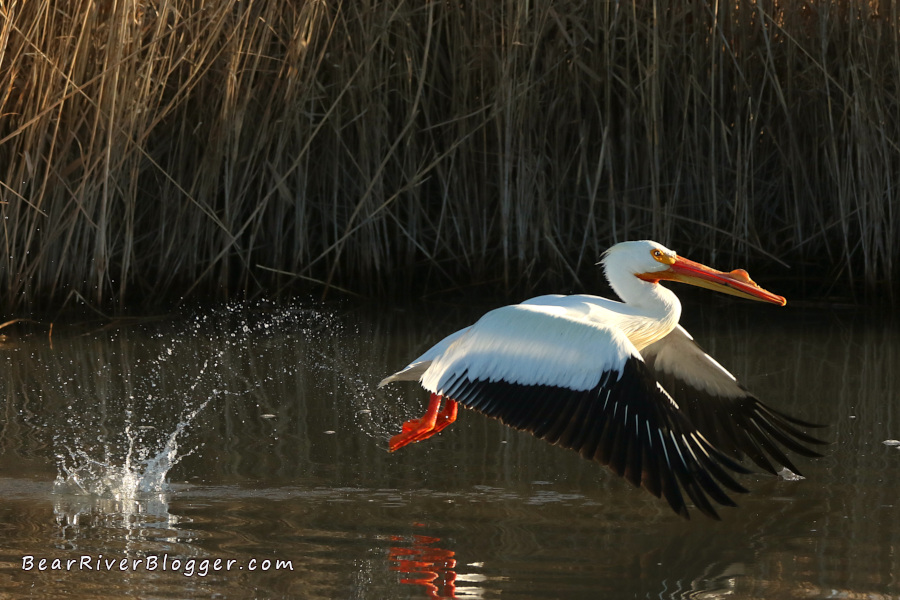
In fact, you really want full sun when photographing birds in flight during the golden hours so you have as much light as possible to run the shutter speed as fast as possible to help stop the wing motion.
Notice how much more color and warmth this pelican photograph has to it, all done with early morning light and very little image editing other than a minor tweak to the exposure, a little sharpening, and some compositional cropping done to it.
At the end of the day, a great image isn’t edited that way it’s photographed that way, plain and simple, meaning nowadays there is too much reliance on editing programs and not enough on basic photography principles like light and composition.
I’m always watching the weather, especially what the cloud cover will be like, on days I want to go out and photograph birds on the refuge or elsewhere.
If it’s full sun then I make the time and effort to get up early and be out there just as the sun is cresting the mountain but if it’s cloudy and the urge to photograph is too strong to deny then I go later in the day as the clouds will help filter the harsh afternoon light.
Today was one of those rare days I opted to photograph on a full-sun afternoon, knowing quite well the results I would get were exactly what I ended up with but, even so, it was a day on the bird refuge and even if my images weren’t spectacular it was still a few hours watching birds and there’s nothing wrong with that at all in my book.
If you love birds and nature like I do, I offer you to head on over to our subscribe page and sign up for email notifications for future blog posts where we share our love for birdwatching, nature, and outdoor photography through both images and the written word here on our website.
(Don’t Let Discouragement Stop You From Photographing. For short nature photography tips and interesting stories about the natural world around us, subscribe to our Bear River Blogger channel on YouTube for videos and updates from our travels while out in nature, both on and off of the famed Bear River Migratory Bird Refuge.)
